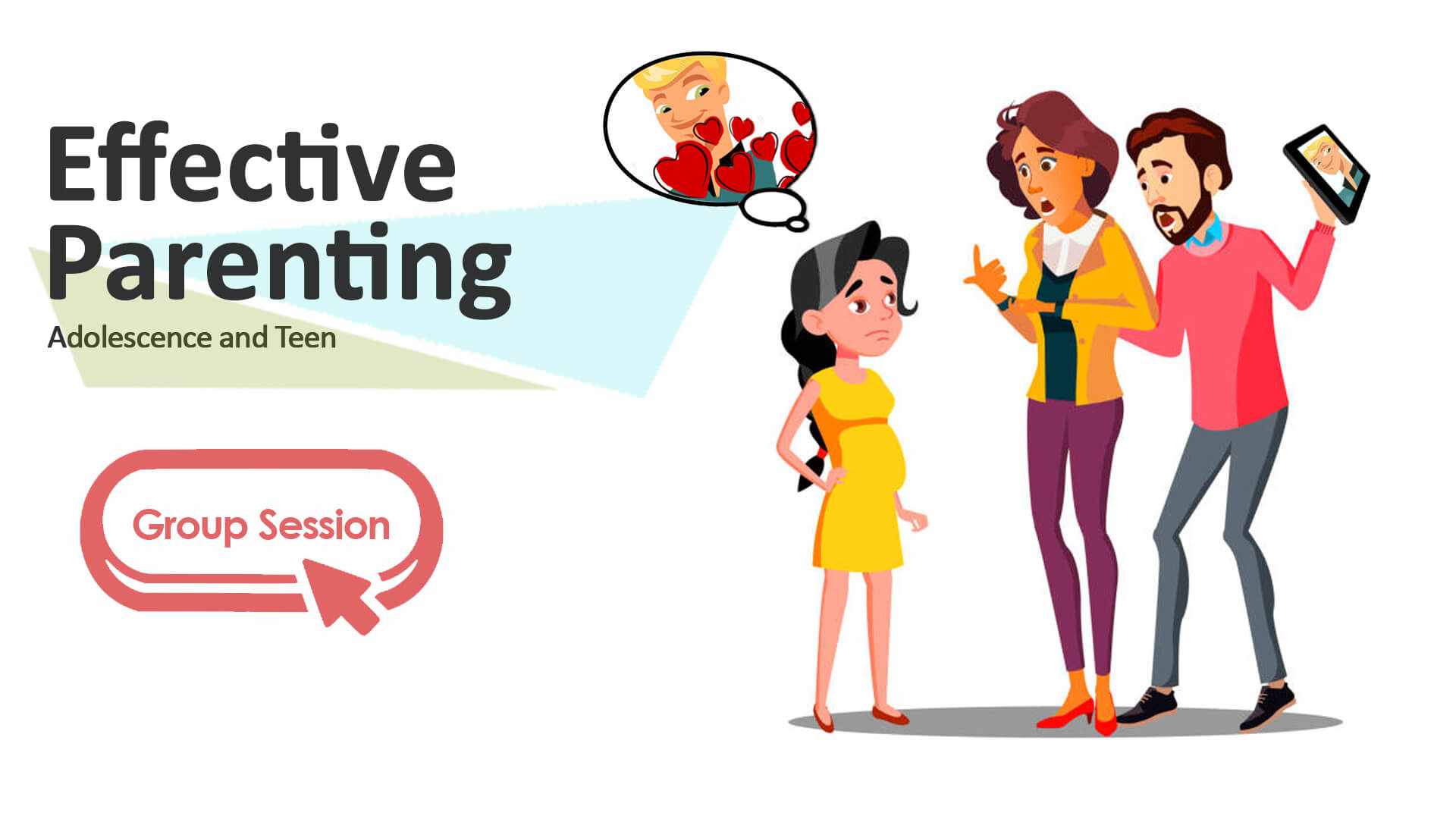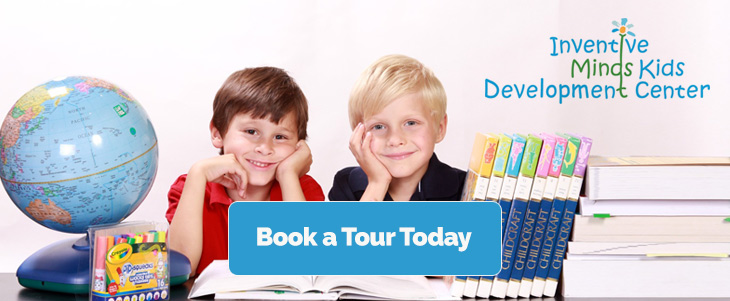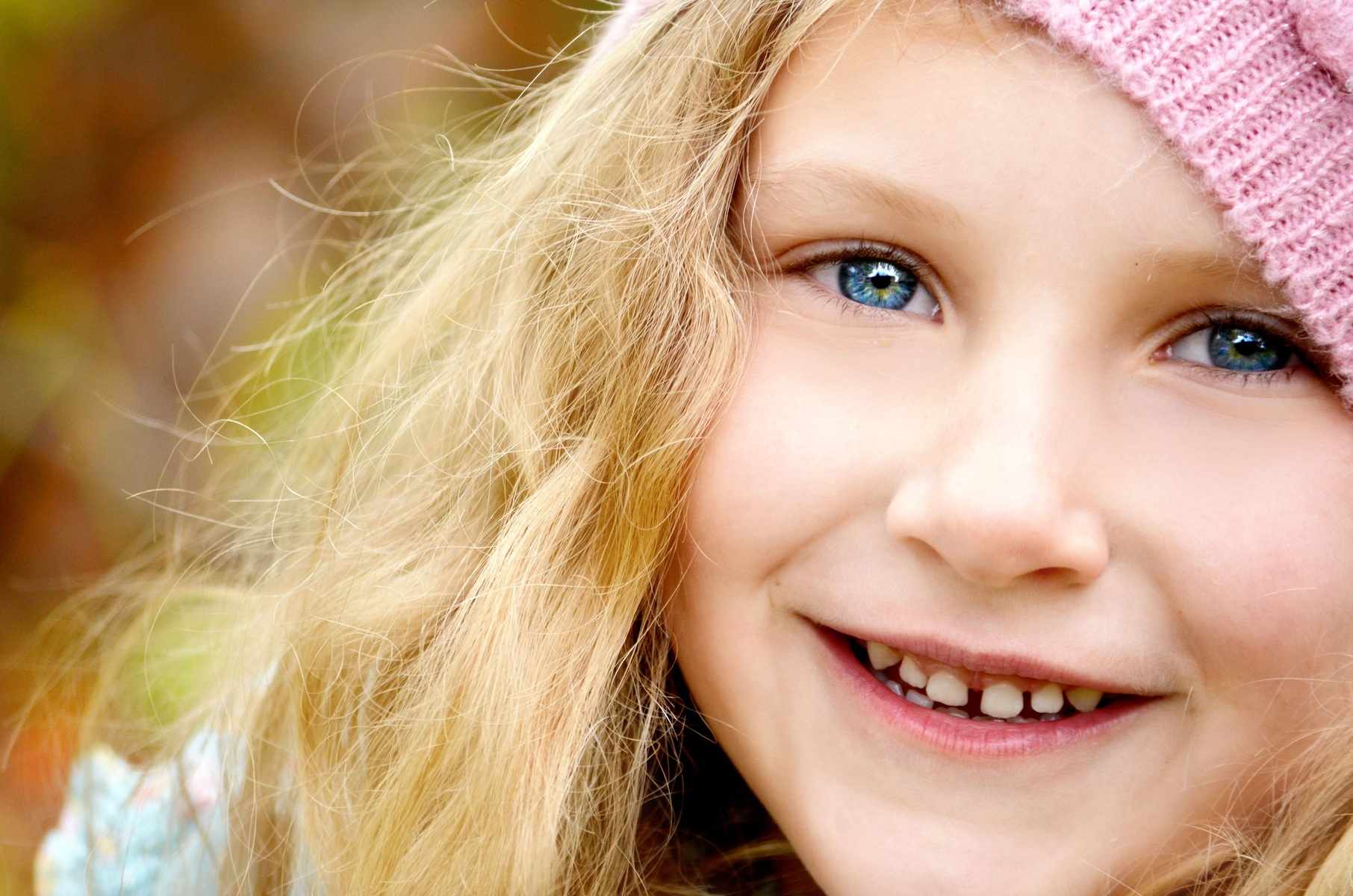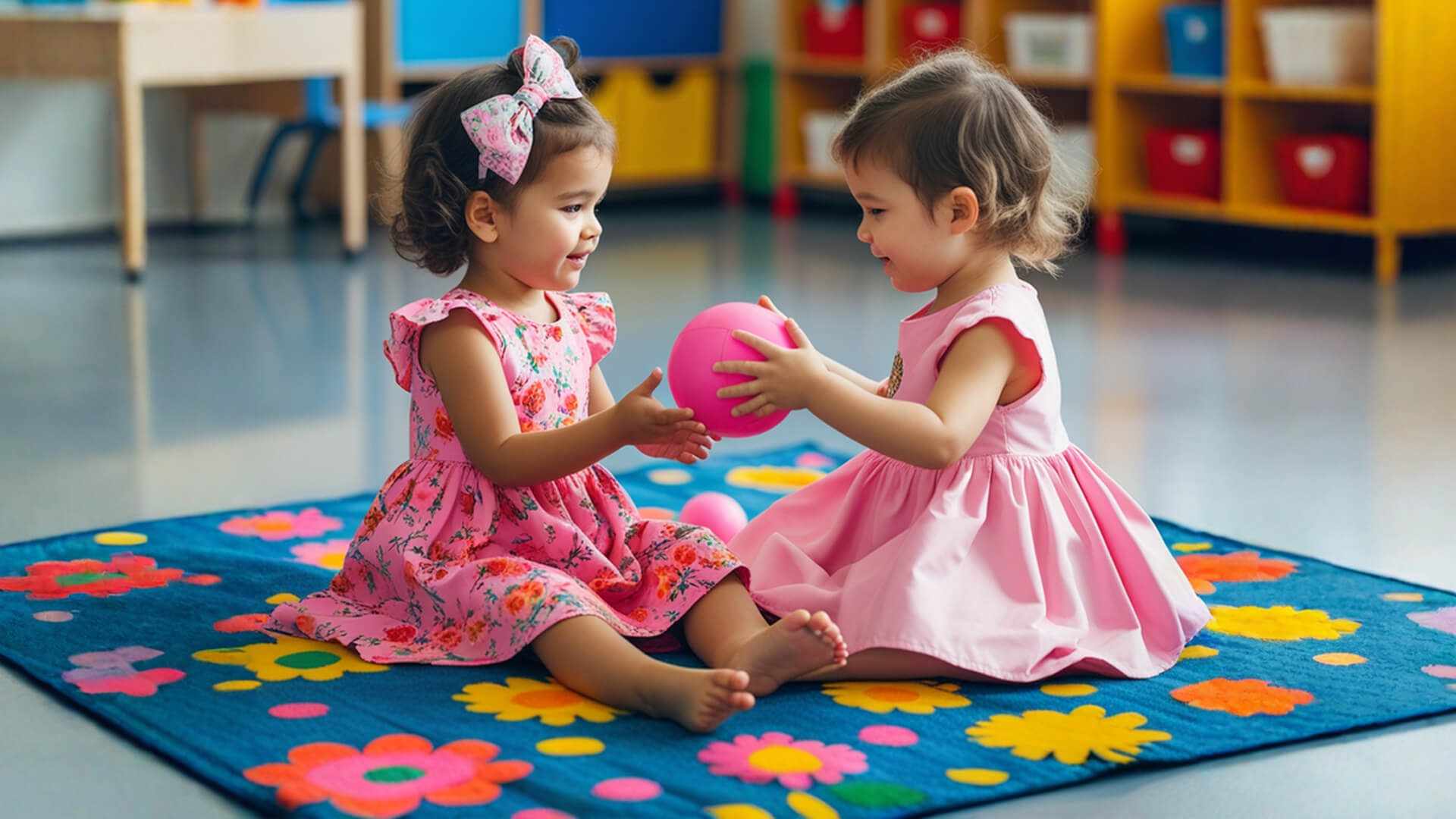ADHD in Children: How to Recognize It and How to Help


ADHD in Children: How to Recognize It and How to Help
 By Inventive Minds Kidz Academy
By Inventive Minds Kidz Academy
 Added Fri, May 16 2025
Added Fri, May 16 2025
 By Inventive Minds Kidz Academy
By Inventive Minds Kidz Academy
Added Fri, May 16 2025
Hey, Thanks For Subscribing!
Please check for a confirmation message and ensure you add us to a safe email list.
If you don't see a message in the next five minutes, check your spam or junk folders and mark our emails safe for next time.
See you soon!
Duplicate Email Found!
Well this is embarrassing... It looks like is already registered.
We have just sent an email to that address with a link to manage the subscription with us. If you don't see a message in the next five minutes, check the spam or junk folders, it's definitely there.
See you soon!

Have you ever wondered if your child’s restlessness, daydreaming, or emotional ups and downs are more than just a “phase”?
As a parent, watching your child struggle to focus, manage their emotions, or cope with school can feel overwhelming. But understanding the science behind these behaviors can be empowering. ADHD is more than a label—it's a window into how your child’s brain works. And once you understand it, you can find the right tools to help them succeed.
Attention Deficit Hyperactivity Disorder (ADHD) and the Brain
Attention Deficit Hyperactivity Disorder (ADHD) is one of the most common neurodevelopmental disorders in children, affecting focus, behavior, and emotional regulation. Contrary to popular belief, ADHD is not just about hyperactivity; it can manifest in different ways.
Research has shown that ADHD is not merely a behavioral issue but is closely linked to brain function. Neuroimaging studies using SPECT (Single Photon Emission Computed Tomography) have revealed that children with ADHD exhibit distinct patterns of brain activity. Understanding these variations can help in accurate diagnosis and selecting the right strategies for management.
Recognizing the correct type of ADHD can help parents find better ways to support their child.
How Does ADHD Affect the Brain?
Neuroimaging studies have identified specific changes in brain activity associated with ADHD, including:
-
Reduced activity in the prefrontal cortex: This area is responsible for focus, decision-making, and impulse control.
-
Decreased blood flow in the temporal lobes: These regions help process sensory information, memory, and emotional regulation.
-
Imbalance in basal ganglia function: This part of the brain plays a role in movement control, habit formation, and focus.
-
Dysfunction in the anterior cingulate cortex: This can lead to getting stuck in repetitive thoughts and behaviors.
Types of ADHD and How to Manage Them
Research has shown that ADHD is not a single disorder but consists of seven different types, each with unique symptoms and treatment approaches.
1. Classic ADHD (Most Common Type)
-
Symptoms: Restlessness, excessive talking, difficulty focusing, impulsive behavior, forgetfulness
-
Brain Characteristics: Reduced activity in the prefrontal cortex and basal ganglia
-
Ways to Help:
-
Establishing structured routines for daily tasks
-
Engaging in aerobic exercises like running and swimming
-
Using brain-training games to improve concentration
-
2. Inattentive ADHD (Often Overlooked Because There Is No Hyperactivity)
-
Symptoms: Daydreaming, distraction, forgetfulness, trouble starting or completing tasks
-
Brain Characteristics: Generalized low activity in the prefrontal cortex
-
Ways to Help:
-
Creating checklists for daily tasks
-
Reducing distractions during study time (e.g., using noise-canceling headphones)
-
Consuming omega-3-rich foods to support brain function
-
3. Overfocused ADHD
-
Symptoms: Obsessive thinking, excessive worrying, difficulty shifting focus, perfectionism
-
Brain Characteristics: Increased activity in the anterior cingulate cortex, leading to fixation on thoughts and behaviors
-
Ways to Help:
-
Practicing relaxation techniques such as yoga and deep breathing
-
Using mindfulness strategies to reduce stress
-
Following a low-glycemic diet to stabilize blood sugar and reduce anxiety
-
4. Temporal Lobe ADHD
-
Symptoms: Mood swings, memory issues, irritability, sudden aggression
-
Brain Characteristics: Reduced blood flow in the temporal lobes, affecting emotional regulation
-
Ways to Help:
-
Using anger management techniques
-
Engaging in memory-strengthening exercises
-
Avoiding stimulants such as caffeine
-
5. Limbic ADHD (ADHD with Depressive Symptoms)
-
Symptoms: Persistent sadness, fatigue, low self-esteem, lack of motivation
-
Brain Characteristics: Overactivity in the limbic system, which is involved in emotion regulation
-
Ways to Help:
-
Increasing exposure to sunlight and regular physical activity to boost serotonin levels
-
Using cognitive-behavioral strategies to change negative thinking patterns
-
Consuming foods rich in vitamin B and magnesium for better energy levels
-
6. ADHD with High Irritability and Mood Swings
-
Symptoms: Extreme sensitivity to noise and light, rapid mood shifts, frequent outbursts
-
Brain Characteristics: Overactivity in brain areas responsible for processing emotions
-
Ways to Help:
-
Reducing sugar, dairy, and gluten intake to minimize brain inflammation
-
Taking magnesium and omega-3 supplements for better brain balance
-
Practicing breathing and relaxation techniques to lower stress levels
-
7. Anxious ADHD
-
Symptoms: Chronic worry, panic attacks, trouble concentrating under stress, insomnia
-
Brain Characteristics: Overactivity in the amygdala, which is responsible for fear and anxiety
-
Ways to Help:
-
Maintaining a consistent sleep schedule to reduce stress
-
Practicing mindfulness exercises for relaxation
-
Combining light exercise, such as walking, with breathing techniques
-
How Can Parents Help?
-
Recognizing the Child’s Strengths: Every child with ADHD also has strengths. Some are creative, some are energetic, and others are excellent problem solvers. Identifying these strengths can help parents find the best path for their child’s growth.
-
Creating Structure and Routine: Children with ADHD perform better in structured environments. Having a clear schedule for daily activities such as sleep, study, play, and meals can be very beneficial.
-
Using Positive Reinforcement: Replacing punishment with a reward system can have a significant impact on behavior. For example, if a child makes an effort to complete homework, they can be rewarded with extra playtime.
-
Working with Teachers: ADHD affects not just home life but also school performance. Communicating with teachers and making them aware of the child’s condition can help create a more supportive learning environment.
-
Paying Attention to Nutrition and Exercise: A healthy diet, especially one rich in omega-3s (such as fish and walnuts), can improve brain function. Additionally, aerobic exercise like running or swimming can help reduce hyperactivity and improve focus.
Conclusion
ADHD is a real challenge, but with the right management, children with ADHD can thrive. Understanding the different types of ADHD, implementing supportive strategies, and recognizing the unique needs of each child can make a significant difference in their lives.
References
Amen, D. G., Henderson, T. A., & Newberg, A. (2021). SPECT functional neuroimaging distinguishes adult attention deficit hyperactivity disorder from healthy controls in big data imaging cohorts. Frontiers in Psychiatry, 12, 725788. https://doi.org/10.3389/fpsyt.2021.725788
National Institute of Mental Health. (n.d.). Attention-Deficit/Hyperactivity Disorder: What you need to know. National Institute of Mental Health. Retrieved March 15, 2023, from https://www.nimh.nih.gov/health/publications/attention-deficit-hyperactivity-disorder-what-you-need-to-know
Have you ever wondered if your child’s restlessness, daydreaming, or emotional ups and downs are more than just a “phase”?
As a parent, watching your child struggle to focus, manage their emotions, or cope with school can feel overwhelming. But understanding the science behind these behaviors can be empowering. ADHD is more than a label—it's a window into how your child’s brain works. And once you understand it, you can find the right tools to help them succeed.
Attention Deficit Hyperactivity Disorder (ADHD) and the Brain
Attention Deficit Hyperactivity Disorder (ADHD) is one of the most common neurodevelopmental disorders in children, affecting focus, behavior, and emotional regulation. Contrary to popular belief, ADHD is not just about hyperactivity; it can manifest in different ways.
Research has shown that ADHD is not merely a behavioral issue but is closely linked to brain function. Neuroimaging studies using SPECT (Single Photon Emission Computed Tomography) have revealed that children with ADHD exhibit distinct patterns of brain activity. Understanding these variations can help in accurate diagnosis and selecting the right strategies for management.
Recognizing the correct type of ADHD can help parents find better ways to support their child.
How Does ADHD Affect the Brain?
Neuroimaging studies have identified specific changes in brain activity associated with ADHD, including:
-
Reduced activity in the prefrontal cortex: This area is responsible for focus, decision-making, and impulse control.
-
Decreased blood flow in the temporal lobes: These regions help process sensory information, memory, and emotional regulation.
-
Imbalance in basal ganglia function: This part of the brain plays a role in movement control, habit formation, and focus.
-
Dysfunction in the anterior cingulate cortex: This can lead to getting stuck in repetitive thoughts and behaviors.
Types of ADHD and How to Manage Them
Research has shown that ADHD is not a single disorder but consists of seven different types, each with unique symptoms and treatment approaches.
1. Classic ADHD (Most Common Type)
-
Symptoms: Restlessness, excessive talking, difficulty focusing, impulsive behavior, forgetfulness
-
Brain Characteristics: Reduced activity in the prefrontal cortex and basal ganglia
-
Ways to Help:
-
Establishing structured routines for daily tasks
-
Engaging in aerobic exercises like running and swimming
-
Using brain-training games to improve concentration
-
2. Inattentive ADHD (Often Overlooked Because There Is No Hyperactivity)
-
Symptoms: Daydreaming, distraction, forgetfulness, trouble starting or completing tasks
-
Brain Characteristics: Generalized low activity in the prefrontal cortex
-
Ways to Help:
-
Creating checklists for daily tasks
-
Reducing distractions during study time (e.g., using noise-canceling headphones)
-
Consuming omega-3-rich foods to support brain function
-
3. Overfocused ADHD
-
Symptoms: Obsessive thinking, excessive worrying, difficulty shifting focus, perfectionism
-
Brain Characteristics: Increased activity in the anterior cingulate cortex, leading to fixation on thoughts and behaviors
-
Ways to Help:
-
Practicing relaxation techniques such as yoga and deep breathing
-
Using mindfulness strategies to reduce stress
-
Following a low-glycemic diet to stabilize blood sugar and reduce anxiety
-
4. Temporal Lobe ADHD
-
Symptoms: Mood swings, memory issues, irritability, sudden aggression
-
Brain Characteristics: Reduced blood flow in the temporal lobes, affecting emotional regulation
-
Ways to Help:
-
Using anger management techniques
-
Engaging in memory-strengthening exercises
-
Avoiding stimulants such as caffeine
-
5. Limbic ADHD (ADHD with Depressive Symptoms)
-
Symptoms: Persistent sadness, fatigue, low self-esteem, lack of motivation
-
Brain Characteristics: Overactivity in the limbic system, which is involved in emotion regulation
-
Ways to Help:
-
Increasing exposure to sunlight and regular physical activity to boost serotonin levels
-
Using cognitive-behavioral strategies to change negative thinking patterns
-
Consuming foods rich in vitamin B and magnesium for better energy levels
-
6. ADHD with High Irritability and Mood Swings
-
Symptoms: Extreme sensitivity to noise and light, rapid mood shifts, frequent outbursts
-
Brain Characteristics: Overactivity in brain areas responsible for processing emotions
-
Ways to Help:
-
Reducing sugar, dairy, and gluten intake to minimize brain inflammation
-
Taking magnesium and omega-3 supplements for better brain balance
-
Practicing breathing and relaxation techniques to lower stress levels
-
7. Anxious ADHD
-
Symptoms: Chronic worry, panic attacks, trouble concentrating under stress, insomnia
-
Brain Characteristics: Overactivity in the amygdala, which is responsible for fear and anxiety
-
Ways to Help:
-
Maintaining a consistent sleep schedule to reduce stress
-
Practicing mindfulness exercises for relaxation
-
Combining light exercise, such as walking, with breathing techniques
-
How Can Parents Help?
-
Recognizing the Child’s Strengths: Every child with ADHD also has strengths. Some are creative, some are energetic, and others are excellent problem solvers. Identifying these strengths can help parents find the best path for their child’s growth.
-
Creating Structure and Routine: Children with ADHD perform better in structured environments. Having a clear schedule for daily activities such as sleep, study, play, and meals can be very beneficial.
-
Using Positive Reinforcement: Replacing punishment with a reward system can have a significant impact on behavior. For example, if a child makes an effort to complete homework, they can be rewarded with extra playtime.
-
Working with Teachers: ADHD affects not just home life but also school performance. Communicating with teachers and making them aware of the child’s condition can help create a more supportive learning environment.
-
Paying Attention to Nutrition and Exercise: A healthy diet, especially one rich in omega-3s (such as fish and walnuts), can improve brain function. Additionally, aerobic exercise like running or swimming can help reduce hyperactivity and improve focus.
Conclusion
ADHD is a real challenge, but with the right management, children with ADHD can thrive. Understanding the different types of ADHD, implementing supportive strategies, and recognizing the unique needs of each child can make a significant difference in their lives.
References
Amen, D. G., Henderson, T. A., & Newberg, A. (2021). SPECT functional neuroimaging distinguishes adult attention deficit hyperactivity disorder from healthy controls in big data imaging cohorts. Frontiers in Psychiatry, 12, 725788. https://doi.org/10.3389/fpsyt.2021.725788
National Institute of Mental Health. (n.d.). Attention-Deficit/Hyperactivity Disorder: What you need to know. National Institute of Mental Health. Retrieved March 15, 2023, from https://www.nimh.nih.gov/health/publications/attention-deficit-hyperactivity-disorder-what-you-need-to-know
Most Talked About Posts
You May Also Like
Staff Picks
Now Trending
Our Newsletter
Duplicate Email Found!
Well this is embarrassing... It looks like is already registered.
We have just sent an email to that address with a link to manage the subscription with us. If you don't see a message in the next five minutes, check the spam or junk folders, it's definitely there.
See you soon!
Join Our Newsletter
Hey, Thanks For Subscribing!
Please check for a confirmation message and ensure you add us to a safe email list.
If you don't see a message in the next five minutes, check your spam or junk folders and mark our emails safe for next time.
See you soon!
Duplicate Email Found!
Well this is embarrassing... It looks like is already registered.
We have just sent an email to that address with a link to manage the subscription with us. If you don't see a message in the next five minutes, check the spam or junk folders, it's definitely there.
See you soon!










